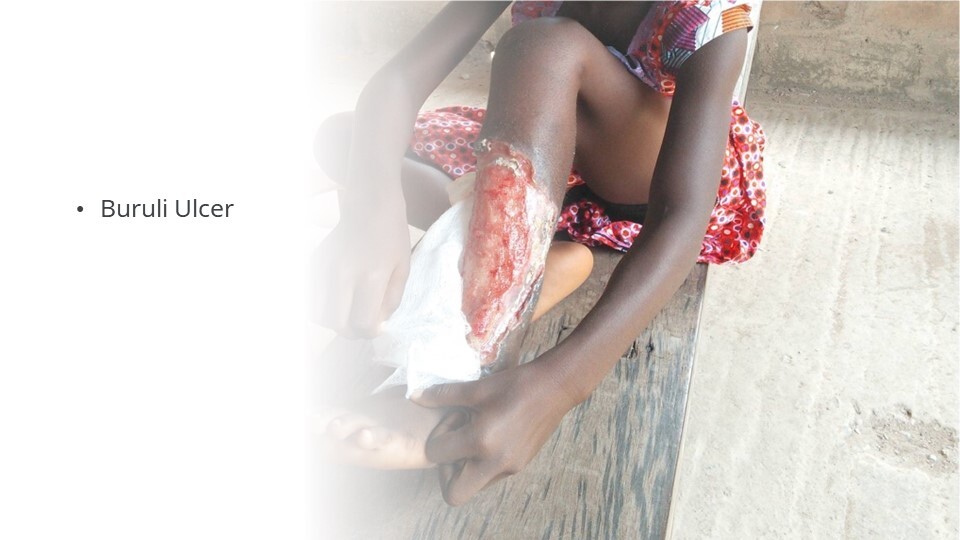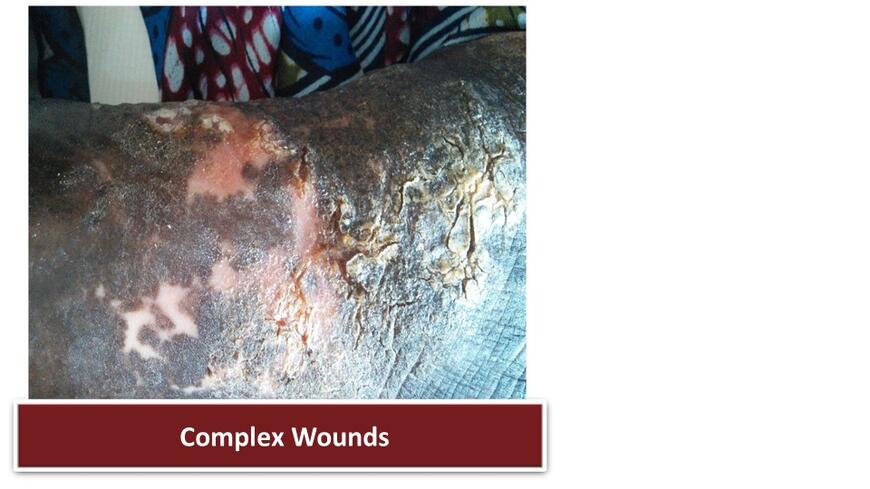Complex wounds may be unique to certain occupations or locations and Mahiri HomeCare works with the client's physician or surgeon led care plan. Mahiri HomeCare forms part of the client's overall care management team. As such, all treatments for complex wounds such as Buruli ulcers must be referred by a physician or surgeon working in a nationally registered public or private hospital or clinic.
Complex wounds include ulcers caused a bacterium called Mycobacterium ulcerans that produces a toxin that causes the skin damage. Without early treatment, this can lead to long-term disability. This germ that causes ulcers uch as Buruli ulcer which belongs to the same family of those that cause tuberculosis and leprosy. It is still unclear how people get Buruli ulcer from the environment.
Buruli Ulcer

Buruli ulcer has been reported in 33 countries in Africa, the Americas, Asia and the Western Pacific. Most cases occur in tropical and subtropical regions except in Australia and Japan. Out of the 33 countries, 14 regularly report data to WHO. The annual number of cases can be found under Global Health Observatory.
The exact mode of transmission of M. ulcerans is still unknown. Buruli ulcer often starts as a painless swelling (nodule), a large painless area of induration (plaque) or a diffuse painless swelling of the legs, arms or face (oedema). The disease may progress with no pain and fever. Without treatment or sometimes during antibiotics treatment, the nodule, plaque or oedema will ulcerate within 4 weeks. Bone is occasionally affected, causing deformities. In most cases, experienced health professionals in endemic areas can make a reliable clinical diagnosis, but training is essential.
Treatment consists of a combination of antibiotics and complementary treatments. Treatment guidance for health workers can be found in the WHO publication Treatment of mycobacterium ulcerans disease (Buruli ulcer).
There are currently no primary preventive measures for Buruli ulcer. The mode of transmission is not known. Bacillus Calmette–Guérin (BCG) vaccination appears to provide limited protection. The objective of Buruli ulcer control is to minimize the suffering, disabilities and socioeconomic burden. Early detection and antibiotic treatment are the cornerstones of the control strategy. In many countries, community health workers play a critical role in case detection.
Note: All care provided by Mahiri HomeCare for Complex Wounds are guided by the client’s physician or surgeon. Plans and tasks conducted by Mahiri HomeCare are completely managed under the authorisation of such physician or surgeon. Mahiri HomeCare only supports clients who have already been diagnosed with Complex Wounds such as Buruli ulcers.
Get in touch to find out how we can support you or your loved one for Complex Wounds.

